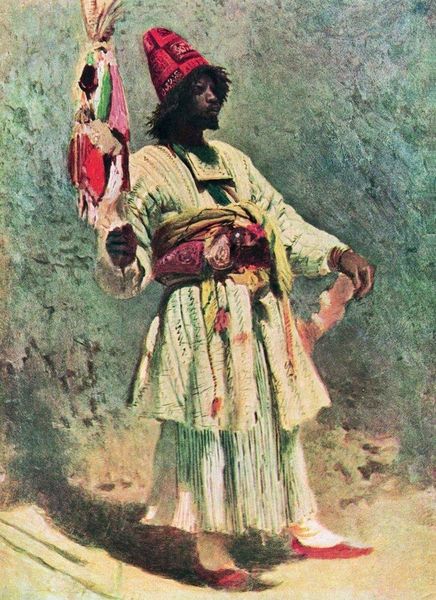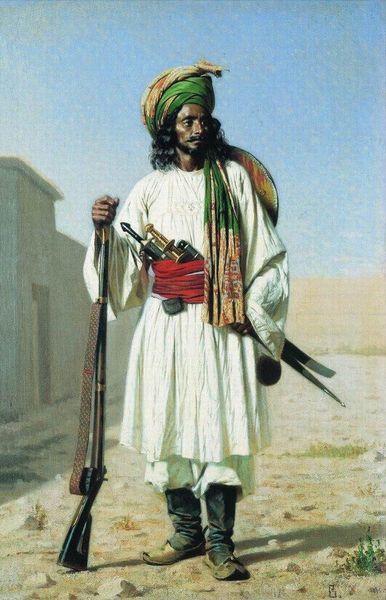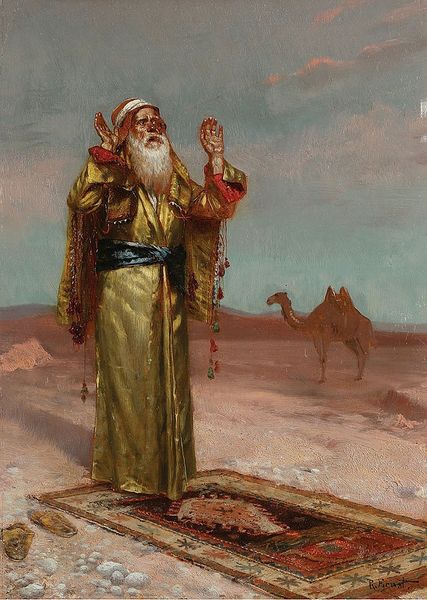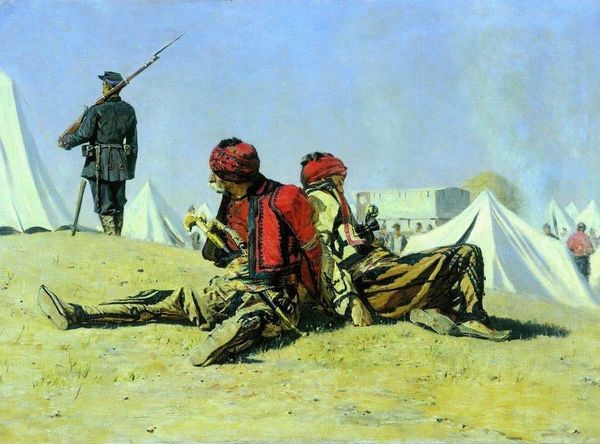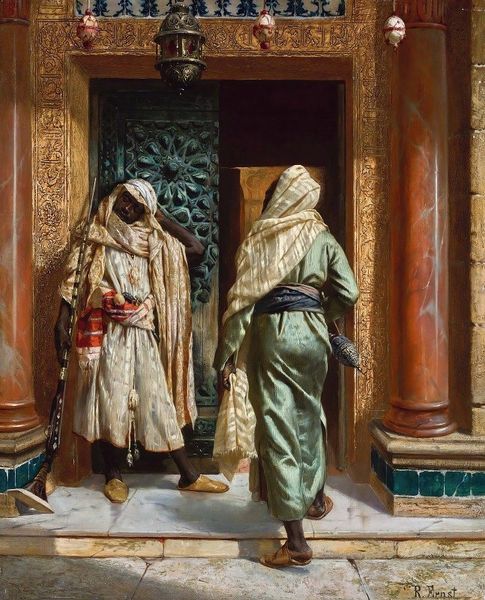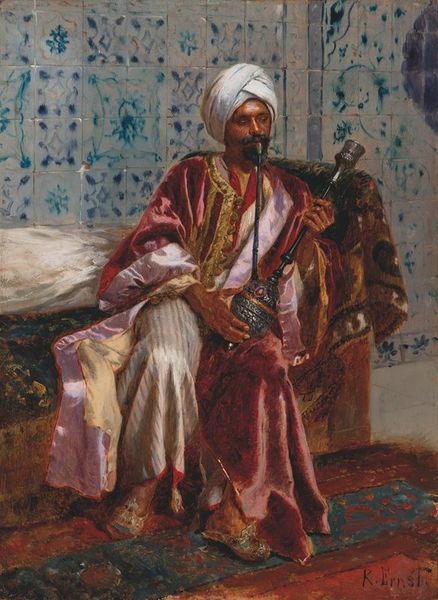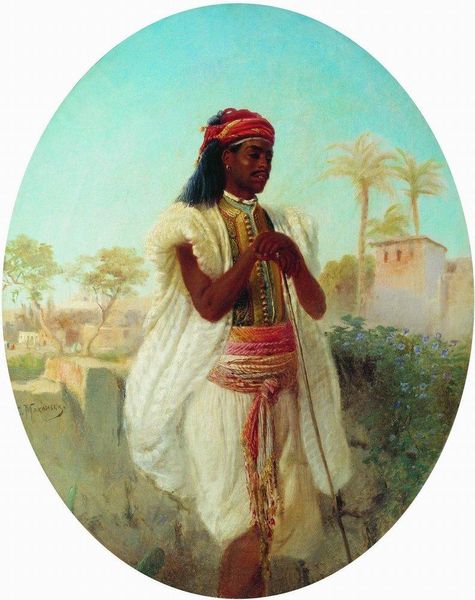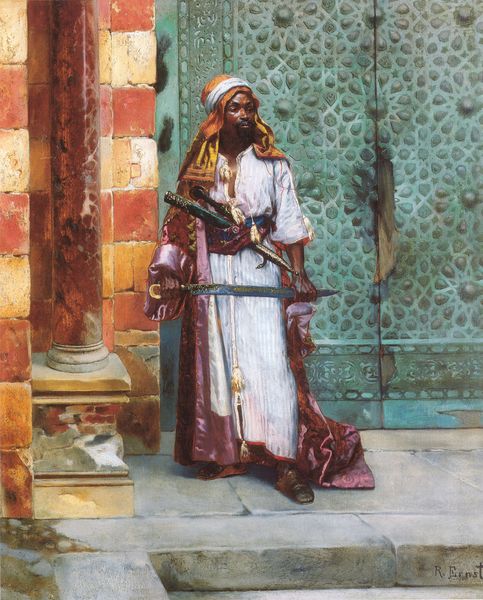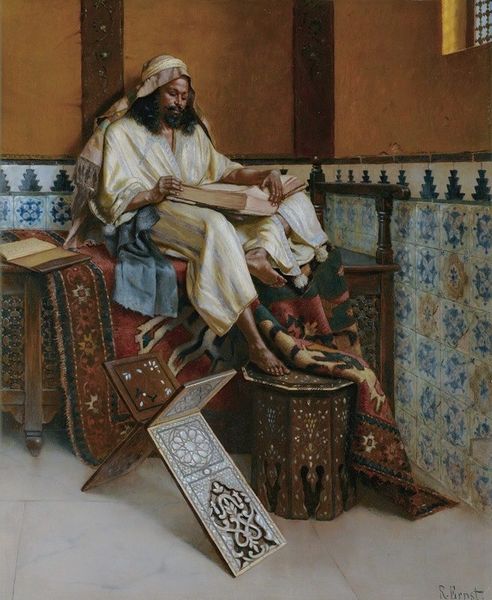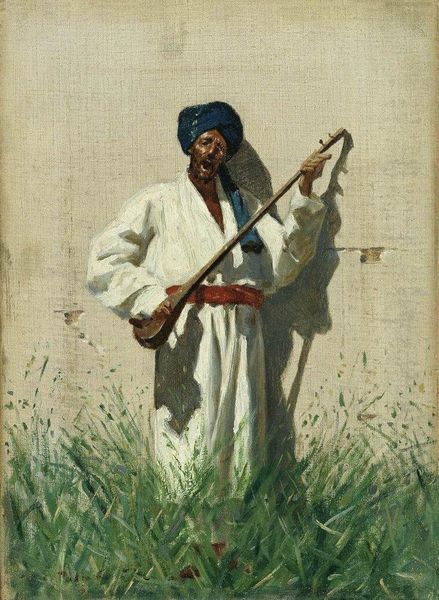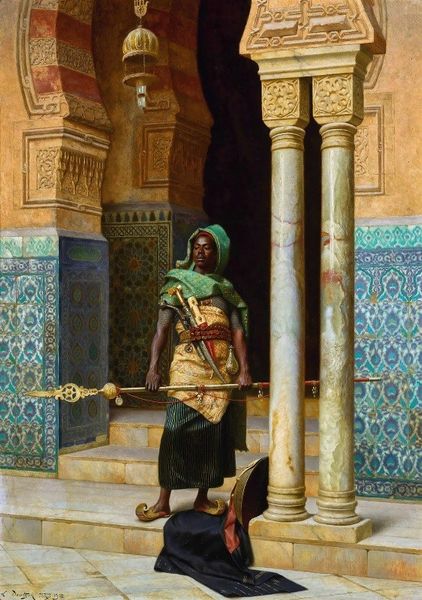
oil-paint
#
portrait
#
oil-paint
#
figuration
#
oil painting
#
romanticism
#
orientalism
#
genre-painting
#
portrait art
Copyright: Public domain
Curator: Here we have Konstantin Egorovich Makovsky’s painting titled “Cairene," an oil on canvas work capturing an evocative genre scene, infused with elements of orientalism. What's your initial reaction to this striking figure? Editor: Well, instantly, the red just vibrates, doesn't it? Against that stark background, he’s like a flame. It's incredibly direct, like he's daring you to look away. A touch theatrical, perhaps? Curator: The choice of red certainly amplifies the subject’s presence, and yes, a sense of drama is palpable, reminiscent of Romanticism's heightened emotionality. Red can be interpreted as passion, energy, or even defiance, all resonating with historical and cultural meanings deeply ingrained in the image. Editor: Defiance, I like that! Because underneath all the bold color, there’s also a strange kind of stillness. He’s holding that pipe so carefully, like it's a scepter, but his gaze is… absent. It’s a compelling mix. It's not merely a surface portrait. Curator: Precisely. Makovsky's inclusion of details like the ornate turban and the smoking pipe isn't just ornamental, they contribute to a broader visual language of exoticism and power that was circulating in European art during that period. These objects act as symbols linking personal identity to broader cultural narratives. Editor: Absolutely, it’s the orientalist fantasy playing out, right? You’ve got the trappings of another world, a man framed as exotic. Still, there’s something arresting about his posture, so rigid. You sense there’s a human being underneath all those layers of representation. Curator: Indeed. The way Makovsky renders the fabric – that cascade of crimson – contributes both to the romanticism and to the objectification. It's as though the cloth itself is telling a story, one interwoven with ideas of trade, empire, and cultural exchange. Editor: It gives pause, doesn't it? Beyond the initial flash of color, it invites you to unpack the gaze, and think about what we’re actually looking at – and *who*. The layers within layers—both beautiful and unnerving. I could get lost in the shadows of that shawl alone! Curator: It’s a vibrant dialogue across time, between the artist's intent and our contemporary interpretation, a rich terrain for exploration indeed. Editor: Right? It shakes up your notions. Makes you wonder about the quiet moments between worlds, captured in paint. And that is where art truly lives.
Comments
No comments
Be the first to comment and join the conversation on the ultimate creative platform.
